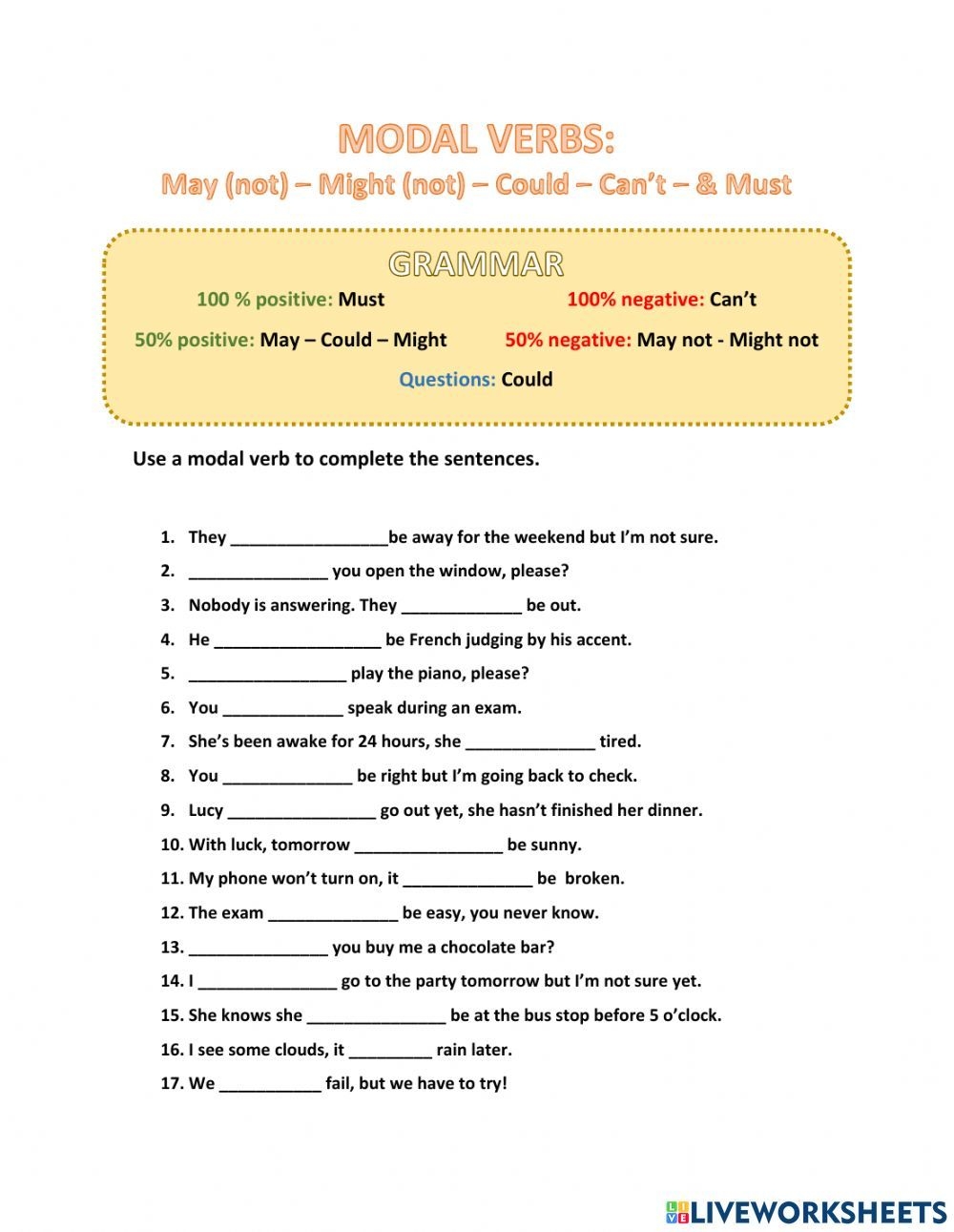Modal verbs are a type of auxiliary verbs that express necessity, possibility, permission, or ability. They are used to modify the meaning of other verbs in a sentence. Understanding how to use modal verbs correctly is essential for effective communication in English.
One way to practice using modal verbs is by completing worksheets that provide exercises and examples. These worksheets help reinforce understanding and allow for hands-on practice with different modal verbs in various contexts.
Modal Verbs Worksheet with Answers
Below is a sample modal verbs worksheet with answers:
1. Fill in the blanks with the appropriate modal verb:
- She __________ be at home by now. (must)
- You __________ eat all your vegetables. (should)
- We __________ go to the concert if we want to. (can)
2. Rewrite the following sentences using a modal verb:
- I am able to swim. (can)
- He has to study for the exam. (must)
- They are allowed to leave early. (may)
3. Choose the correct modal verb to complete the sentence:
- You ________ come to the party if you want to. (can / could)
- We ________ finish the project on time. (must / should)
- She ________ speak five languages fluently. (can / may)
4. Fill in the blanks with the correct form of the modal verb:
- I __________ speak Spanish fluently. (can)
- She __________ be at work by now. (must)
- We __________ go to the movies tonight. (should)
5. Circle the correct modal verb in each sentence:
- I should / would like to go to the beach this weekend.
- You can / could borrow my car if you need it.
- He may / might be late for the meeting.
By completing exercises like the one above, learners can improve their understanding and usage of modal verbs in English. Practice makes perfect, so don’t hesitate to try more worksheets to enhance your skills.
Overall, modal verbs play a crucial role in conveying different meanings in English sentences. With consistent practice and reinforcement through worksheets, mastering modal verbs can be an achievable goal for language learners.
